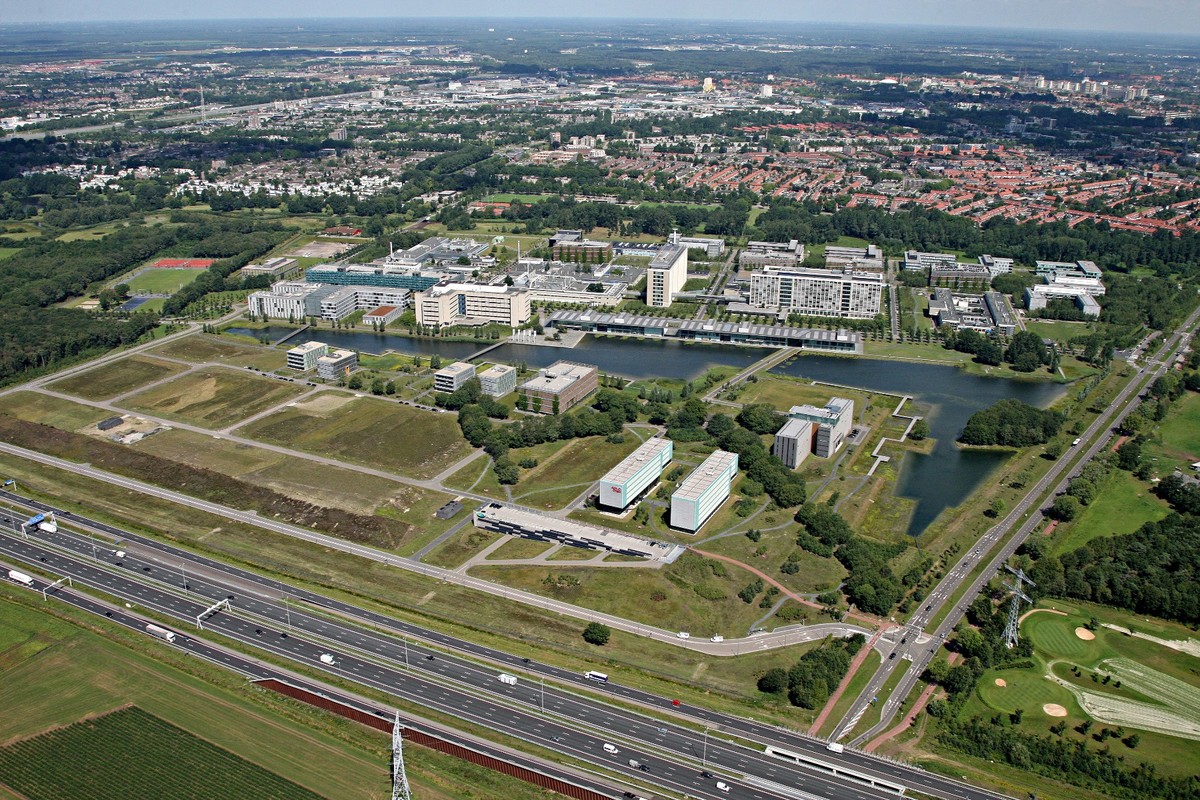
设计单位 INBO瑛泊, JHK (Architects), Juurlink + Geluk (Landscape Architects)
项目地点 荷兰埃因霍温
建设时间 2000年,2015大体竣工,现在仍在扩容
建筑面积 新建220,000平方米, 改造 130,000平方米
125年前,飞利浦公司为荷兰南部城市埃因霍温市带来了电灯的光明。如今,这座城市正在经历另一次转型,这次转型来源于在创意、创新、技术、设计和知识领域不断涌现出来的新发展:飞利浦商业园区,目前被称为埃因霍温高科技园区(HTCE),位于埃因霍温城市的南部,是荷兰国家级“脑力运动”发展的主要贡献者,在城市再生中发挥着重要作用。
Over 125 years ago, Philips brought light to the city of Eindhoven, a city in the south of The Netherlands. Nowadays, the city is undergoing another transition, with a constant flow of new developments in the field of creativity, innovation, technology, design and knowledge. The former Philips campus, currently better known as the High Tech Campus Eindhoven (HTCE), located in the southern part of the city and a major contributor to the national level ‘brainport’ development, plays an important role in the regeneration of the city, ultimately to become a key player in the Dutch knowledge economy.
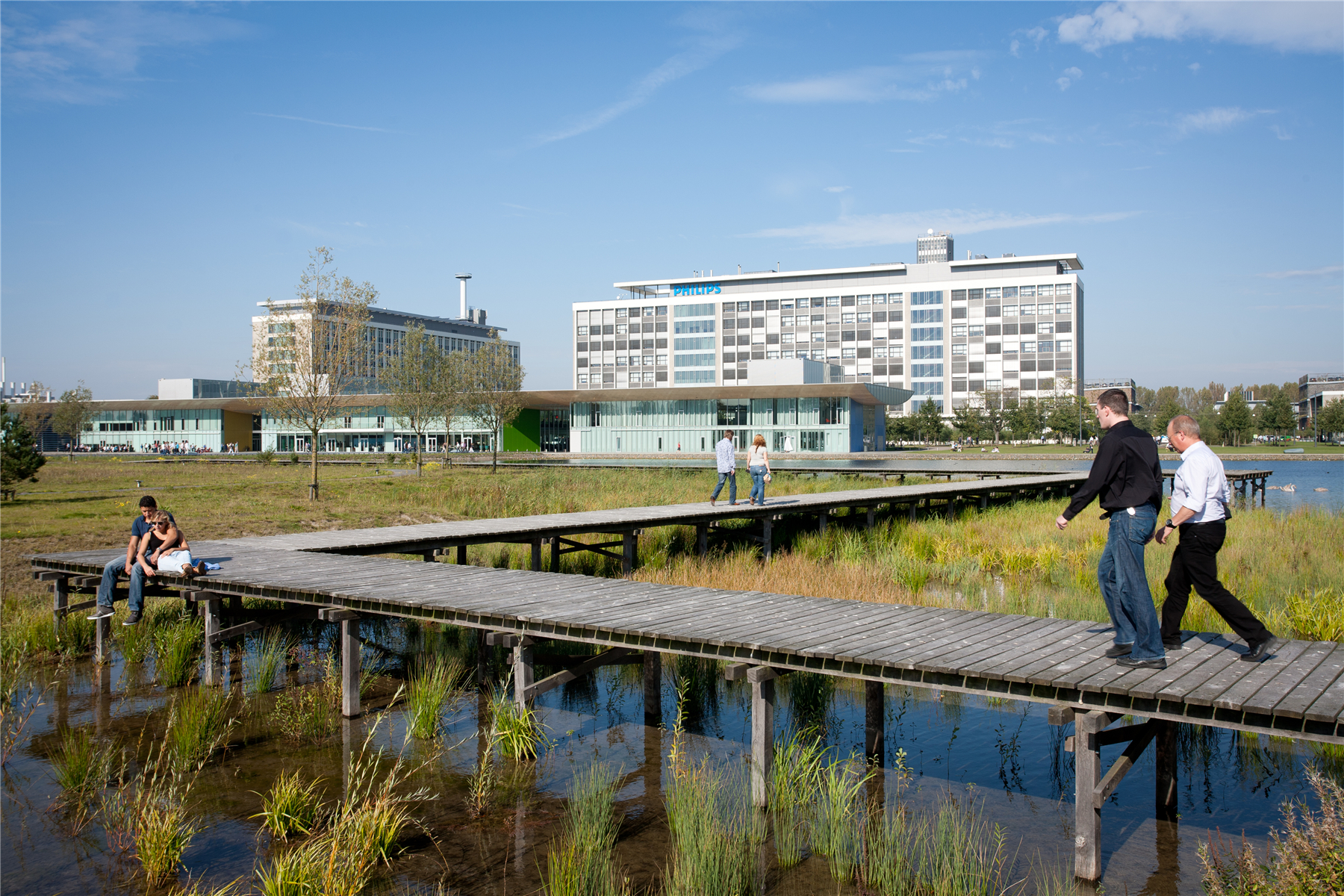

飞利浦于1998年建立了自己的工作园区,将其所有研发活动集中在一个地方。研发机构由此快速扩张并在长期创新中获得成功,2003年起,这个园区开放给其他的技术公司和机构,以便从彼此的互补优势中获益。
Philips established the campus in 1998 to concentrate all its R&D activities on one single location. Considering its rapid expansion and long list of innovations, this approach proved to be highly successful during the years. In 2003 the campus was opened for other companies and institutions to benefit from the proximity of each other’s complimentary strengths.
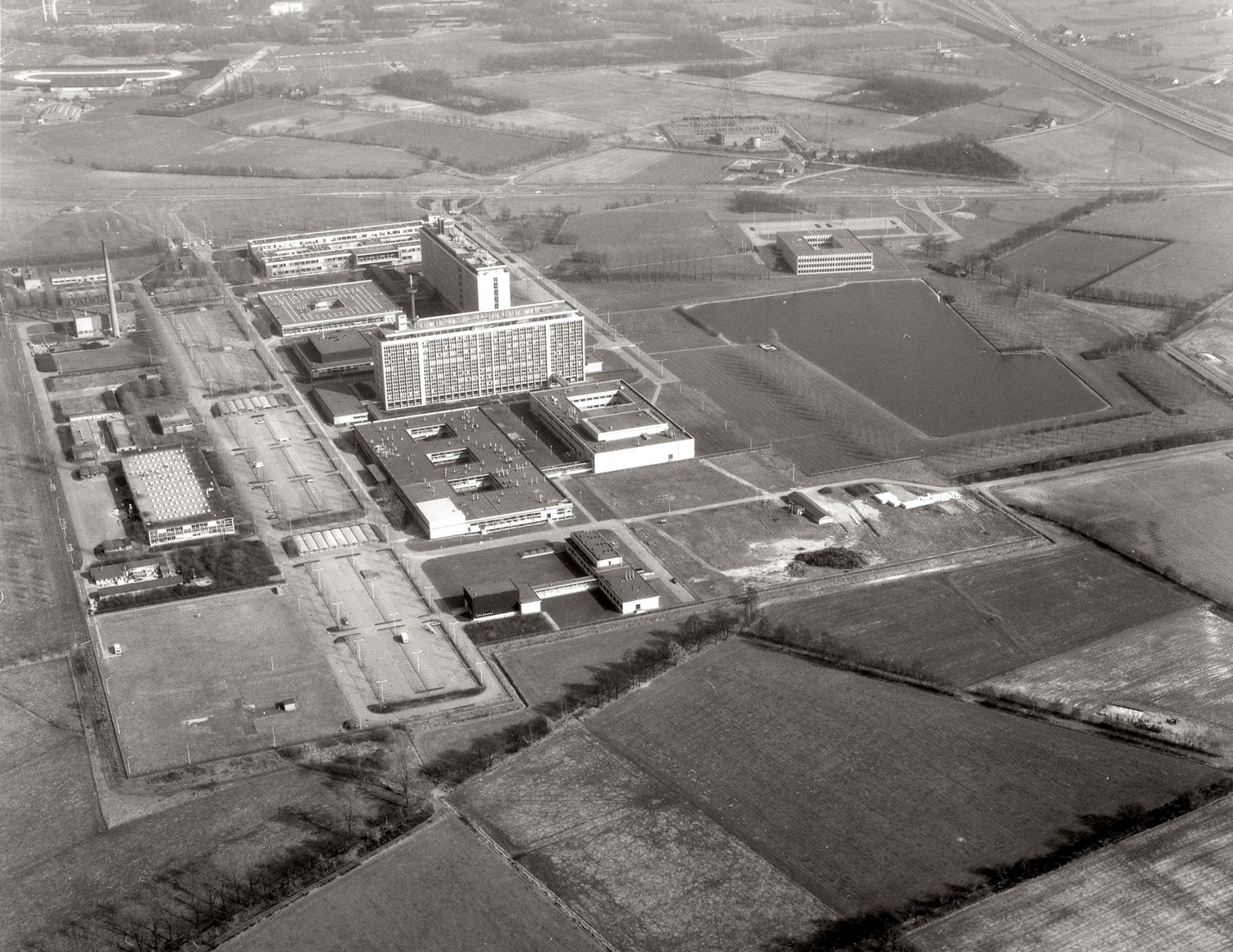
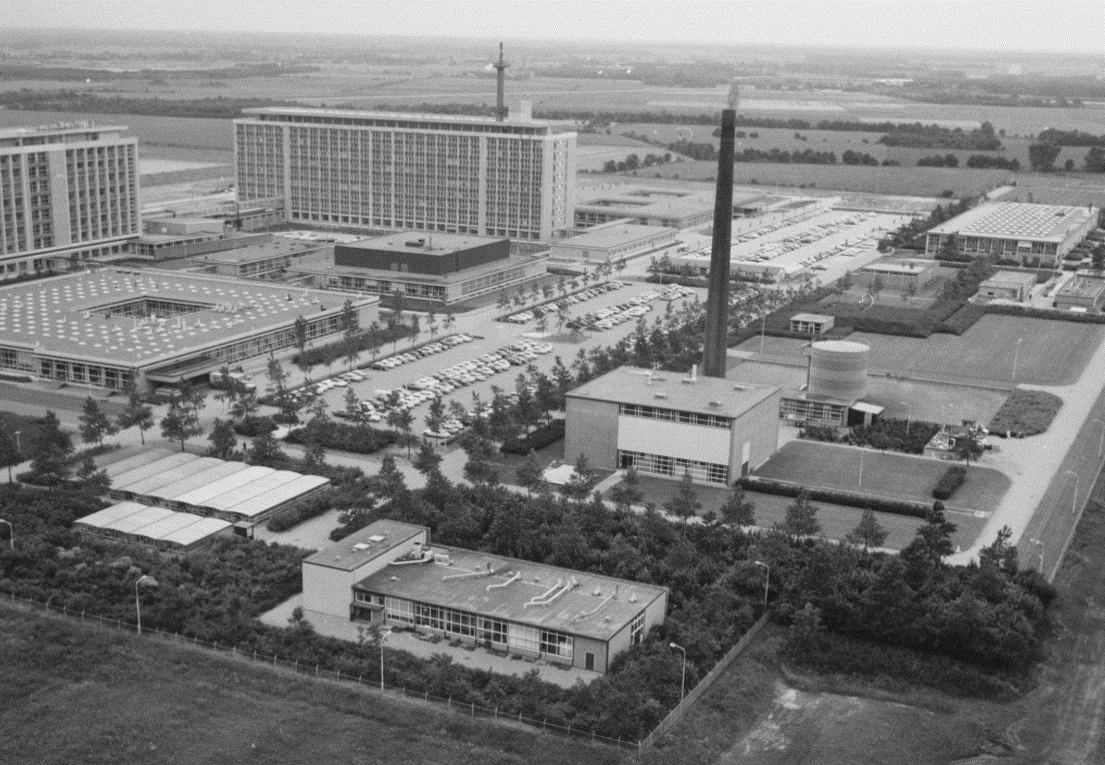
重新进行园区设计的出发点是为“开放式创新”创造一个良好的环境,在不同背景和学科的研究人员之间分享知识,相互激发灵感,会更有效地促进其创新能力。根据麻省理工学院的研究,80%的产品和服务上的突破性创新并非在正式会议或计划好了的头脑风暴工作坊里发生, 而是专职人员之间非正式接触交流的结果。创新往往是通过非正式聚会和“混乱”的过程而产生的。
Starting point for the redesign of the campus is to create an environment for ‘open innovation’. Sharing knowledge and mutual inspiration between researchers of different background and discipline generates a definite boost for the innovative capacity of the involved organizations. According to MIT study, 80% of breakthrough innovations in products and services did not occur during formal sessions or planned brainstorms. Innovation was merely the result of informal encounters between dedicated professionals, i.e. of informal get together and ‘chaos’ rather than of organized processes.

Inbo与JHK建筑建筑事务所以及Juurlink [+] Geluk景观设计师携手合作,为埃因霍温高科技园区设计开发了总体规划框架。在这个框架里,城市规划、景观和建筑是一个平衡的综合系统。Inbo的总体规划框架旨在通过将以汽车为导向的传统园区提升为“以人为本”的现代园区,最大可能地激发园区居民之间的非正式接触和交流。IT和其他服务设施将为知识工作者提供最佳的灵活性,并促进合作和提高工作效率。而建筑物本身也需要灵活的设计,因为飞利浦相信,一个老式严格的办公室无法适应瞬间就会发生变化的高品质现代工作环境。
In collaboration with JHK architects and Juurlink [+] Geluk Landscape architects, Inbo developed an award-winning masterplan framework in which urban planning, landscape and architecture are one balanced integrated system. Inbo’s masterplan framework aims to stimulate the informal encounters and cross fertilization between campus inhabitants as much as possible by transforming the car-oriented campus into a ‘people oriented’ campus. IT and other facilities are provided to offer knowledge workers optimum flexibility and to stimulate cooperation and efficiency. The buildings need to be flexibly designed too; according to Philips an old-fashioned rigid office has no place in a high quality modern working environment where the parameters are likely to change at a moment’s notice.


密集的慢行交通网络是园区规划组织的基础。 而车行通道被安排在园区的边界,停车位集中在停车楼里。景观与建筑融为一体,才营造出宜人的户外环境。
A dense slow-traffic network is the base for the organization of the campus. Car access is arranged at the borders of the site with parking in concentrated parking buildings. The landscape merges with the built areas into a pleasant outdoor environment.

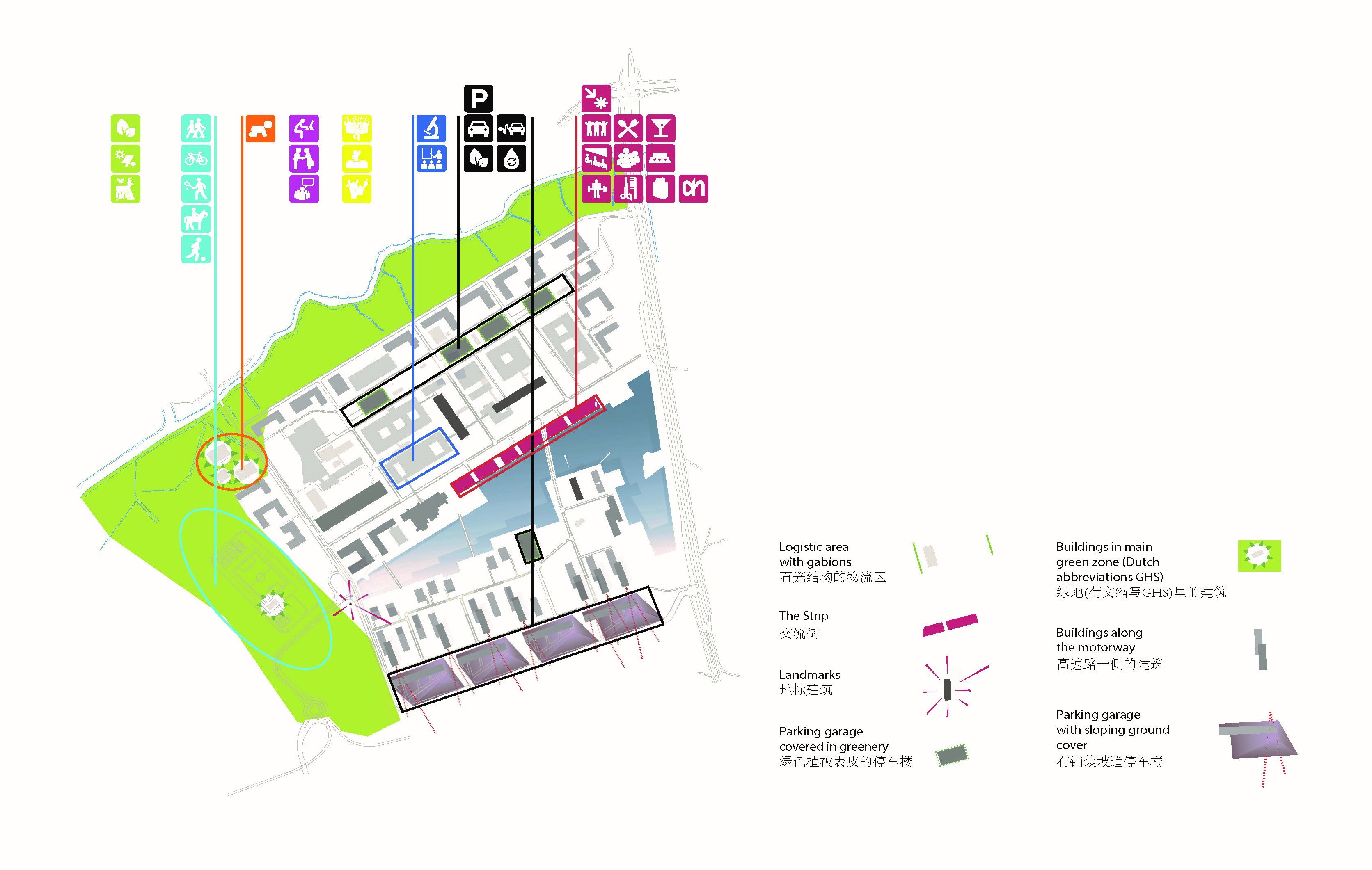
位于中央湖北岸的建筑“交流街”是园区的心脏,拥有园区需要的所有公共设施。这个心脏吸引并鼓励着园区的人们离开办公桌,走出办公室,去喝一杯咖啡或参加社区活动。这就是“开放式创新”开始的地方。
The central building ‘The Strip’, on the northern bank of the central lake, is the heart of the campus and houses all shared facilities. It stimulates campus inhabitants to get out of their office to grab a coffee or join a community event. This is where the ‘open innovation’ starts.

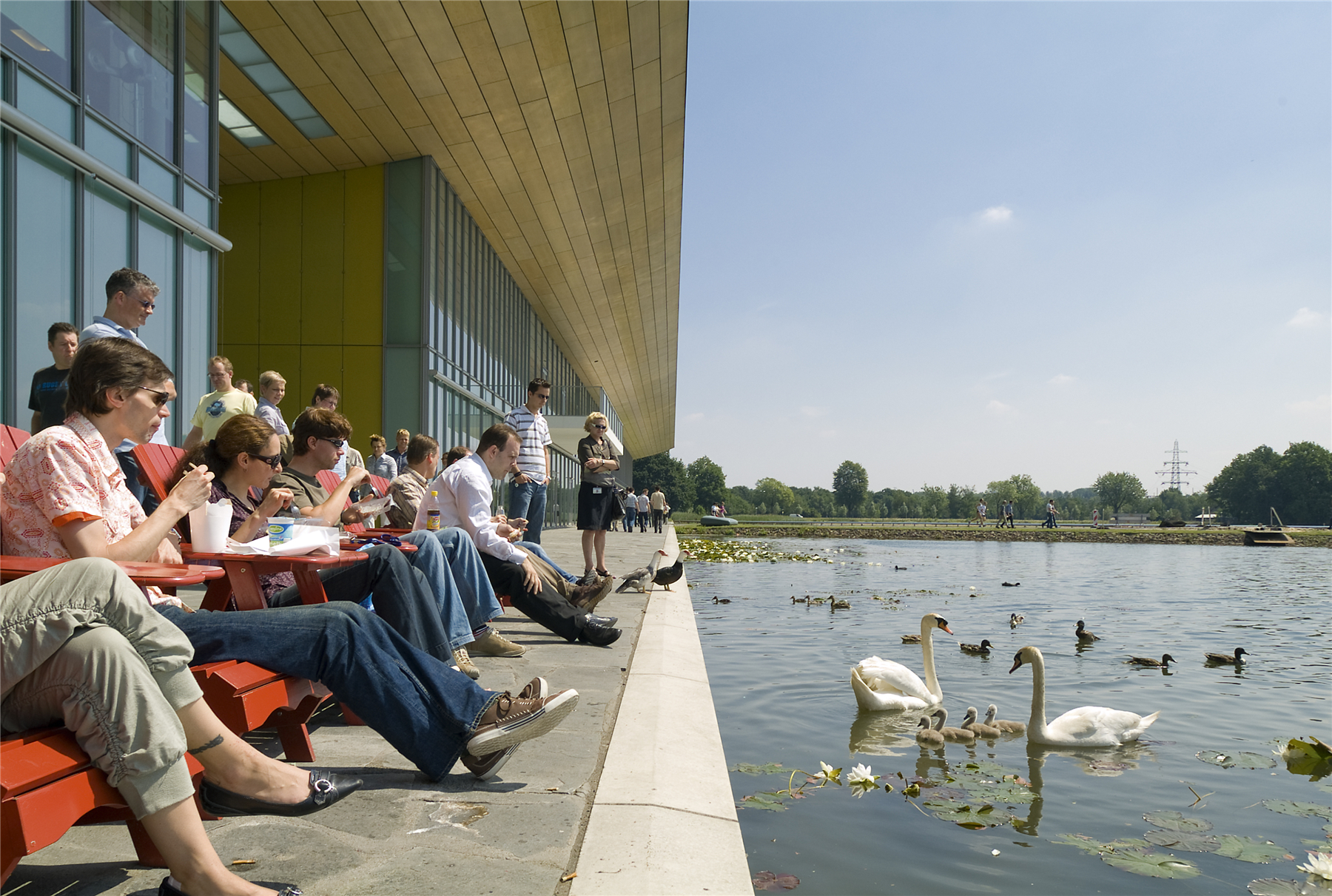


现有的自然景观被精心整合到总体规划框架中,建筑结构积极响应其特定的周围景观条件。例如,在北部的山毛榉木区域,L形或U形建筑围绕出庭院空间。在石楠树和绿篱景观中,由于线性的建筑和开放的景观条纹相互交替,出来的空间效果是透明开放的。建筑物与景观中的开阔视线相得益彰。办公楼基本上是四层高,低于周围树木的高度,这是为了让人们最大限度地体验自然。这种效果通过开放透明且健康可持续的建筑设计而得到增强。
The existing landscape was carefully integrated in the masterplan framework and the built structures respond to its specific surrounding landscape conditions. In the beech wood area in the north for instance, L- or U-shaped buildings enclose spaces. In the heath and hedgerow landscape, the spatial effect is transparent due to the alternation of linear buildings and open strips of landscape. The buildings are mainly four floors high, lower than the height of the surrounding trees, to allow the maximal experience of nature. This effect is enhanced with an open and sustainable architecture which plays with the open lines of sight in the landscape.

多样化的工作场所位置清晰,易于抵达,布置得透明而且随意。大面积的玻璃幕墙让人们有直接在宜人的景观中工作的感觉。充满日光的中庭设计在建筑的中心,可以作为中央社交空间。日光深深地穿透建筑,长时间的自然光也可以减少能源使用,温暖的日光也有助于高效的蓄热系统。为了促进健康运动的生活方式,加强人和人面对面的接触,主楼梯被设计在易于到达的地方,而电梯则处在楼梯的后方。
Diverse workplaces are easily accessible, informally furnished and transparent to maximize the feeling of working in the pleasant surrounding landscape. Atriums full of daylight are designed in the heart of the building as central meeting spaces. They provide deep daylight penetration to reduce energy use and also contribute to the successful heat storage system. To stimulate a healthy lifestyle and face-to-face contact, main stairs are prominently planned in front, while elevators are positioned more in the back.

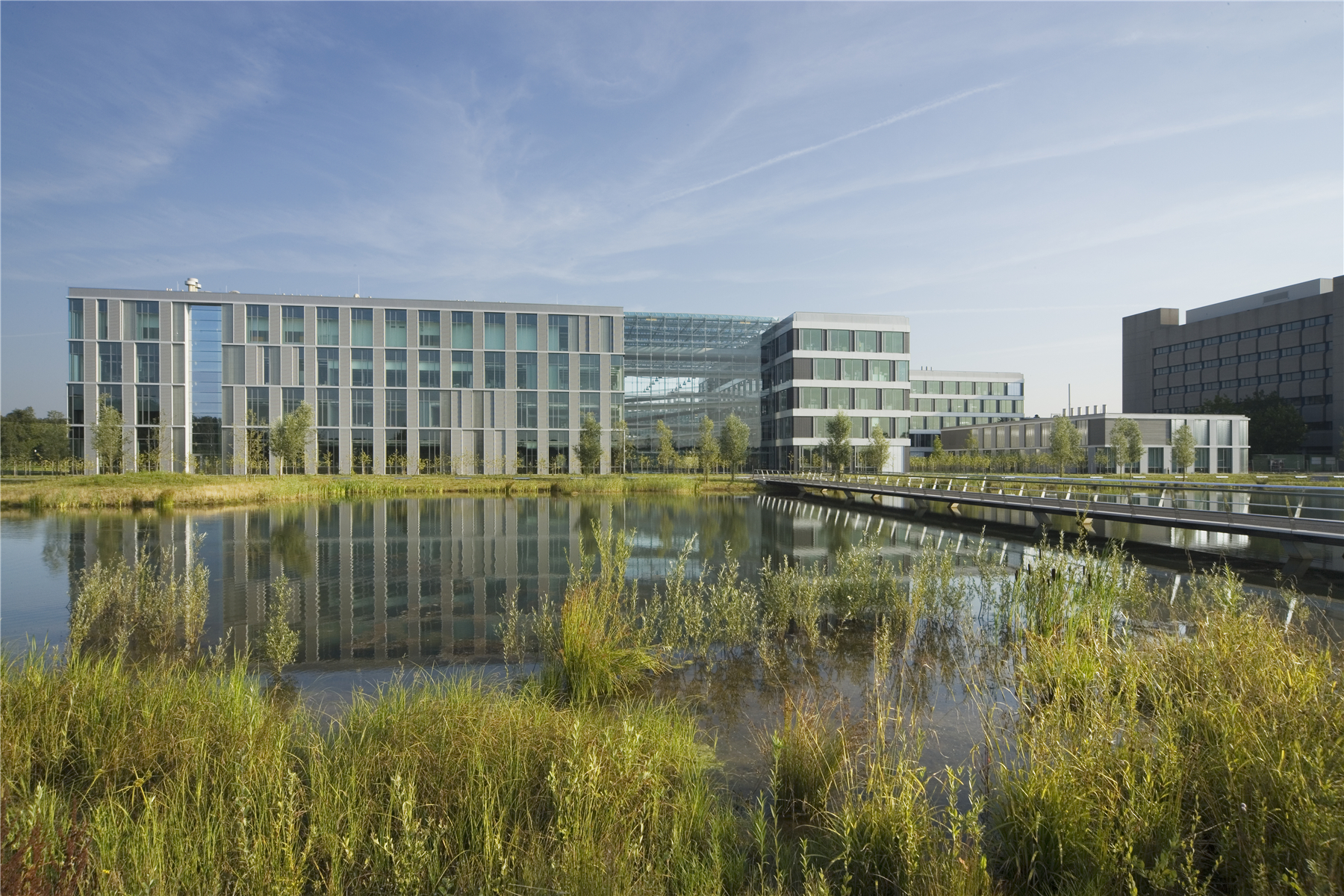
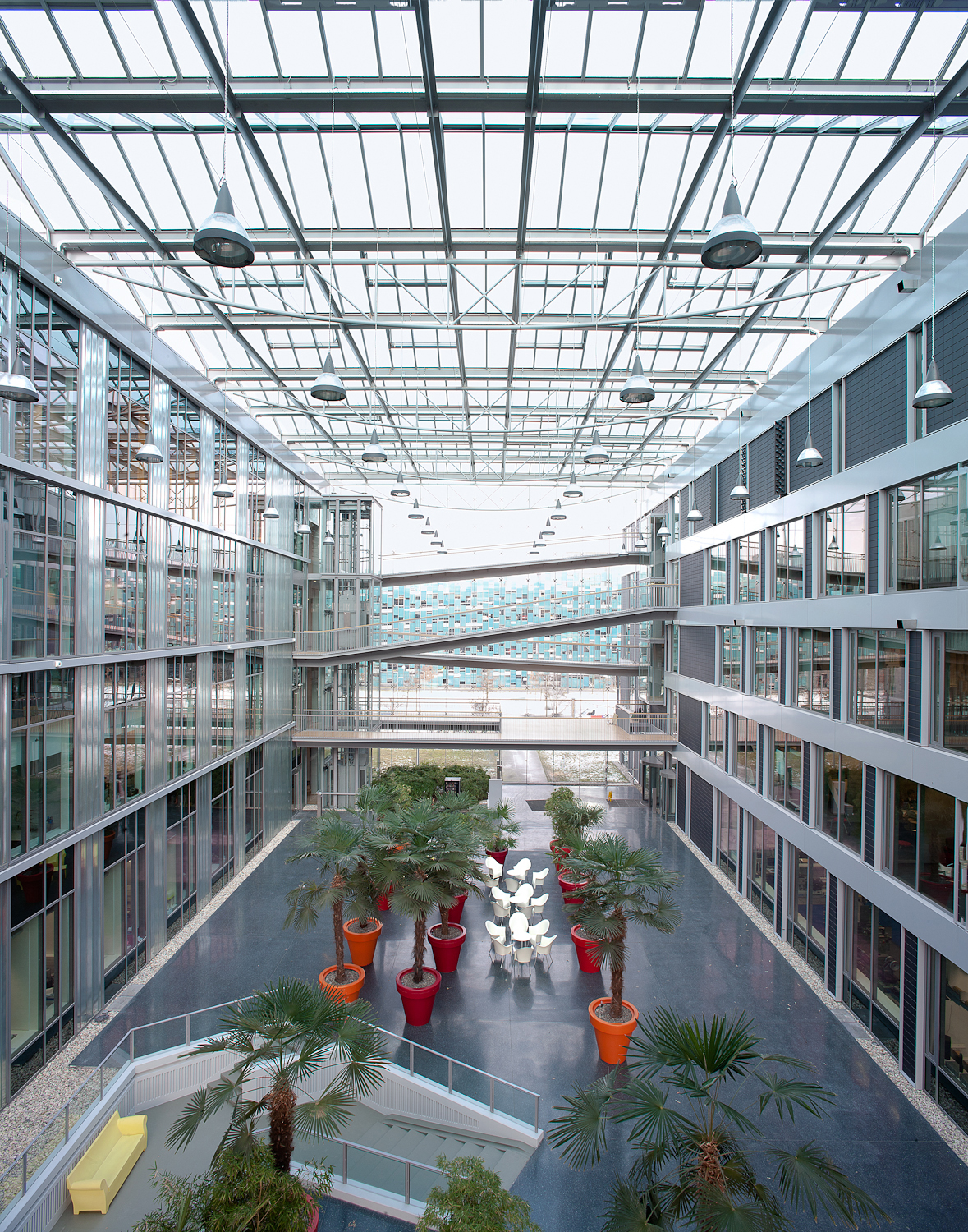
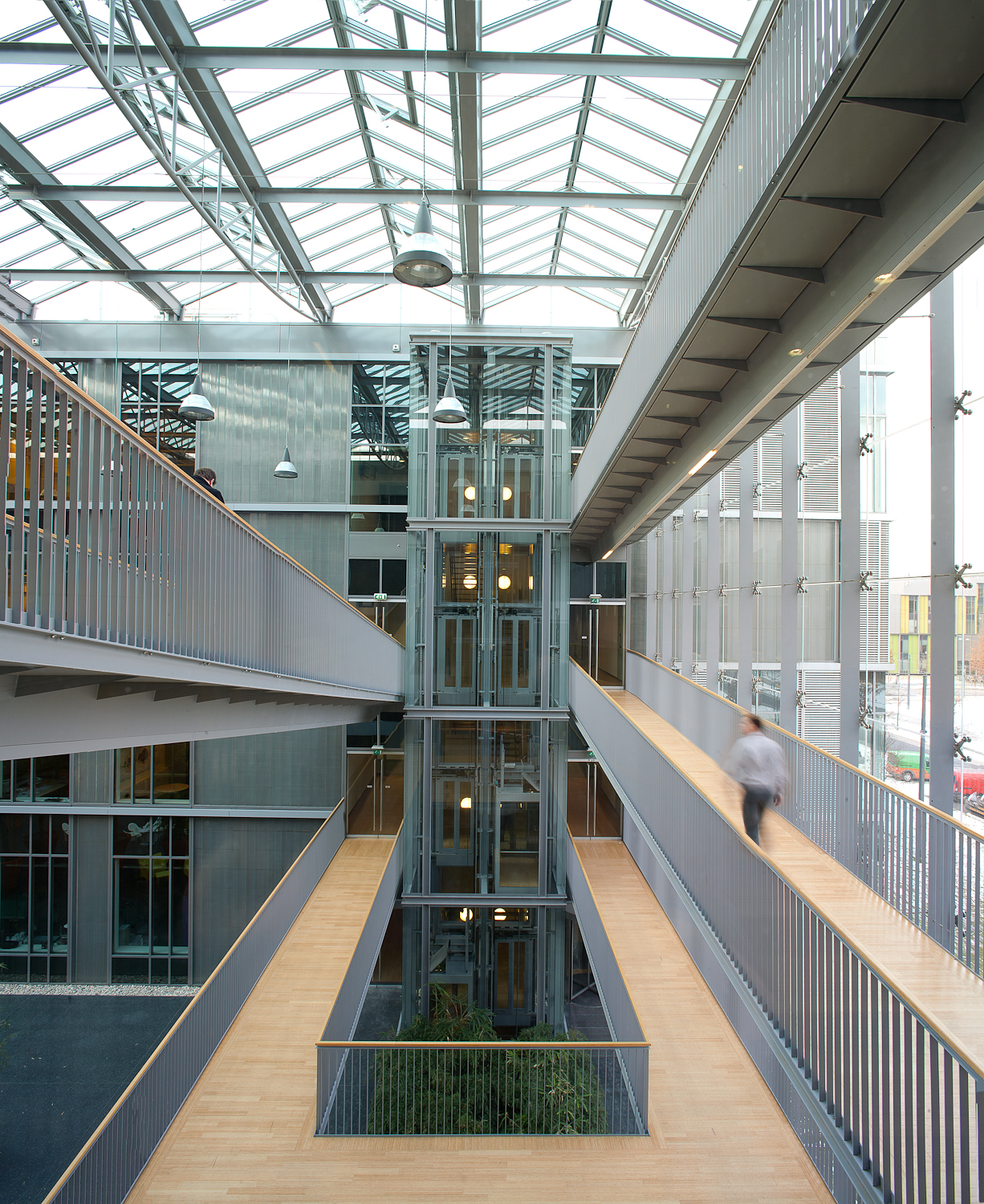
设计的根本意义不是要突出个别建筑的重要性,而是关于总和的附加价值。这个附加价值体现在五个主要方面:
- 每个不同的景观都有自己独特的生态特征,为空间设计提供良好的环境和个性特征;
- 停车设施集中,靠近车行道。停车楼设计有绿植外墙,可以容纳4,000个停车位,并与景观融合;
- 车行道位于园区周边,以保护宁静的行人慢速交通区域;
- 精心设计的园区与自然环境积极互动,是活泼又外向的。这也给予社区一个强烈的个性特点;
- 共用设施位于园区的中心:交流街。这里不仅是一个美好的与客户共进午餐、进行社交活动或参加体育比赛的地方,更重要的是,公共设施都集中在这里,是刺激人和思想融合的地方。
The essence of the design is not about the significance of individual buildings, but about the added value of the collective. This value lies in five main aspects:
- Different landscapes, each with their own characteristic ecological profile, provide the perfect setting and identity for the spatial design;
- Parking facilities are centralized and placed close to the car oriented traffic. In total 4,000 parking spaces are covered behind green facades, perfectly merging with the landscape;
- The motorized traffic road is located on the periphery of the campus to protect a peaceful central slow traffic (pedestrian) area;
- The design is carefully developed for an active interaction with the natural surroundings and a deliberate extrovert character. This gives a strong identity to the campus community;
- The common shared facilities are located in the center of the campus: The Strip. It is not only an attractive place for lunch with the clients, a network event or a sports competition, but far more important, it is a concentration of collective facilities that catalyzes the coming together of people and ideas.





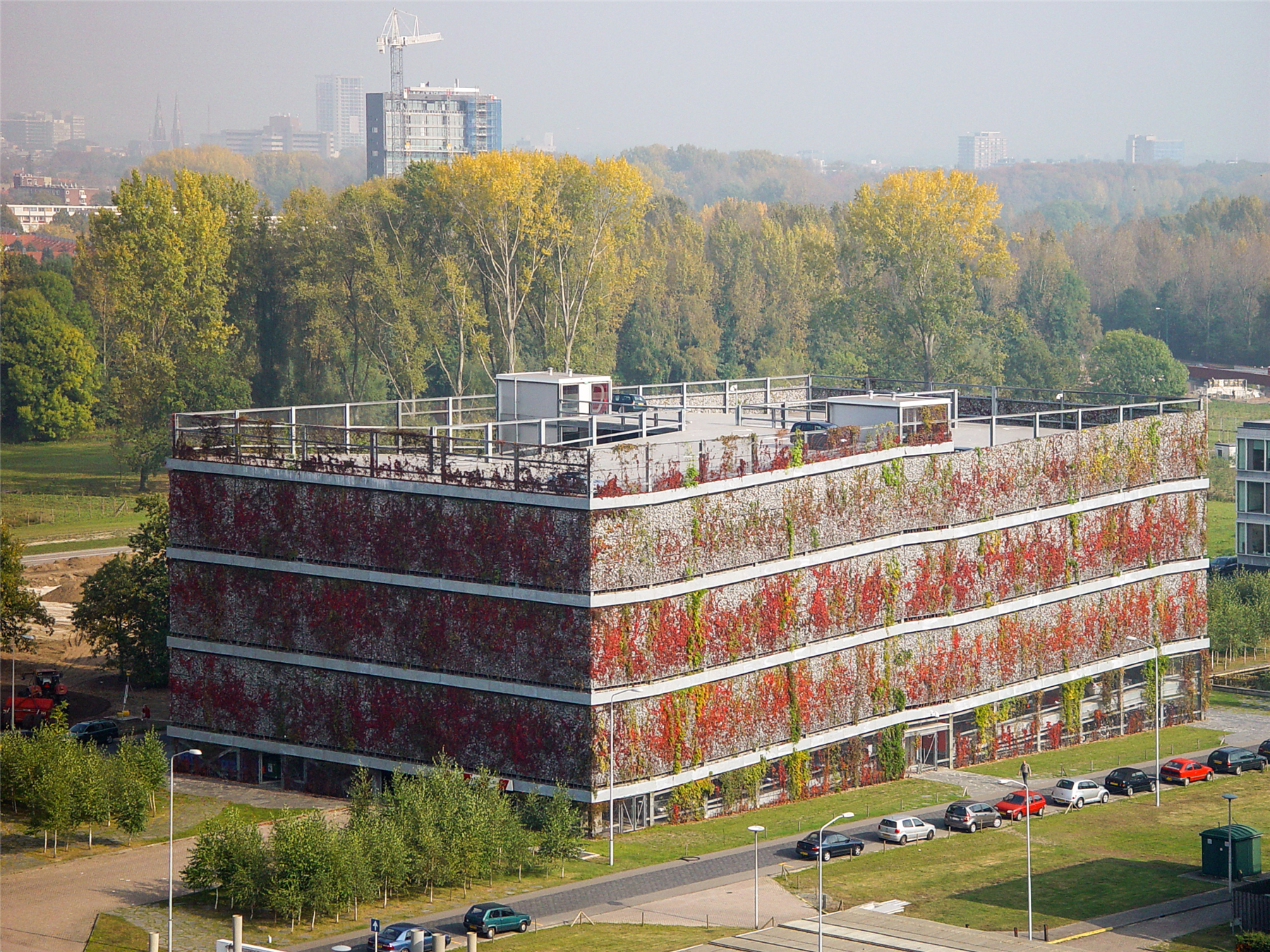

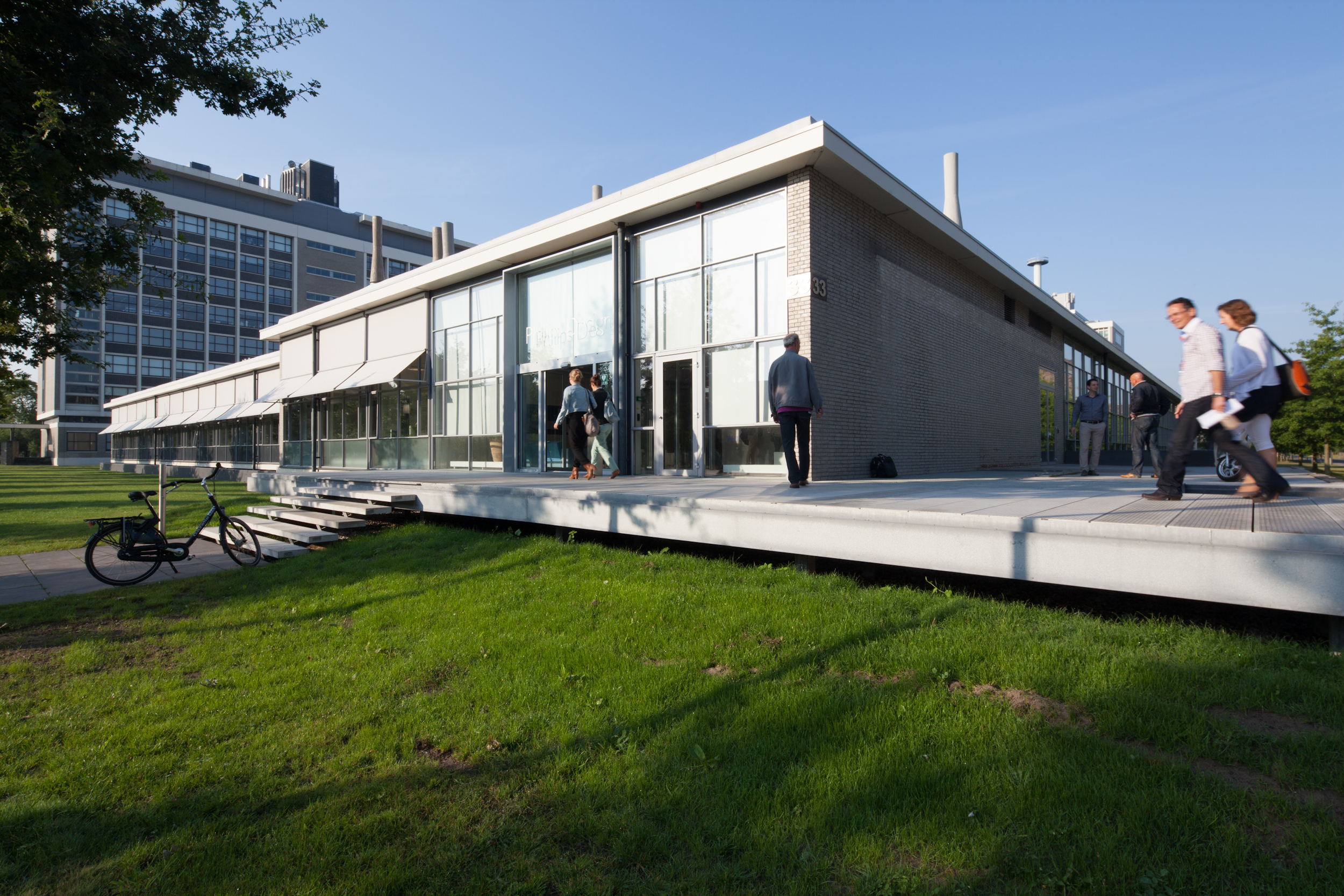

这个综合设计方案的成果就是这个“欧洲最智能的一平方公里”,埃因霍温高科技园区。它拥有世界上最高的人均创新产出。这个智能的规划框架促使了一个传统的楼区重新焕发活力,转型成一个鼓舞人心的“开放式创新”环境。它鼓励健康的生活方式,为一个强大的社区创造了一个现代的集体领域。由于园区作为创新领跑者的可信赖性和知名度,其中的每个公司都能够更轻松地开发自己的品牌。而这个园区还拥有荷兰最大的智能电网,并把冷却、供暖设施、发电、智能移动系统和废物处理策略集为一体。
The result is the ‘smartest square kilometer of Europe’ with the highest output of innovations (per capita) in the world. As a consequence of the smart framework, the traditional compound could regenerate itself to an inspiring ‘open innovation’ environment. It ensures a high quality built environment focused on the ecological footprint. It’s green qualities initiates healthy lifestyle and creates a new public realm for a strong campus community. A community in which each company can develop its own brand and at the same time rely on the trusted and well-known name the HTCE has as a front runner in innovation. And they share more. The HTCE also has the biggest Smart-grid of The Netherlands, with collective cooling and heating facilities, electricity generation, smart mobility system and waste-treatment strategy.
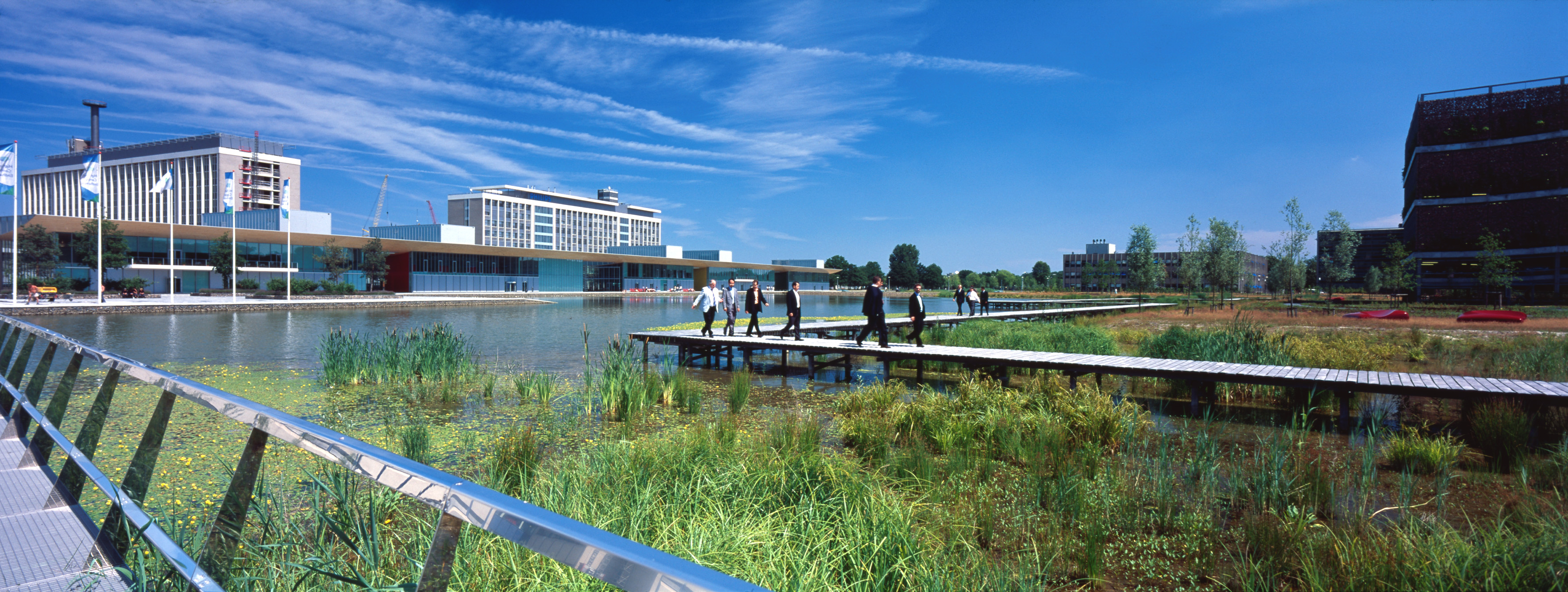
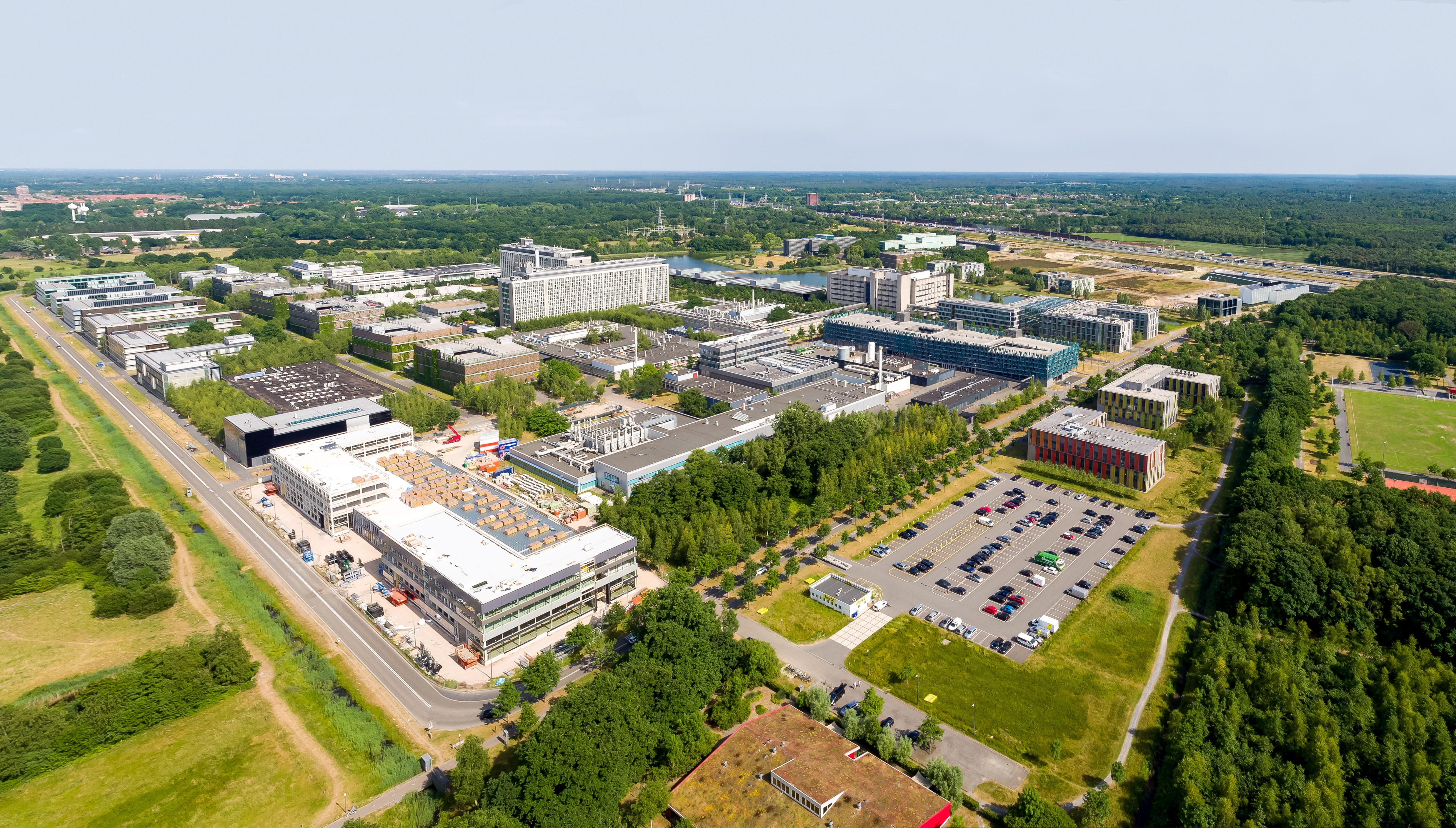
完整项目资料
项目名称:荷兰埃因霍温飞利浦高科技产业园区
项目类型:规划、节能建筑设计
项目地点:荷兰埃因霍温
设计单位:INBO瑛泊, JHK (Architects), Juurlink + Geluk (Landscape Architects)
主创建筑师:Aron Bogers, Bert van Breugel, Jacques Prins, Hans Toornstra
设计团队完整名单:Aron Bogers, Bert van Breugel, Jacques Prins, Hans Toornstra
业主:飞利浦科技园区
建成状态:建成
设计时间:1998起,仍在扩容设计
建设时间:2000年,2015大体竣工,现在仍在扩容
用地面积:100,000,000平方米
建筑面积: 新建220,000平方米, 改造 130,000平方米
规划:INBO
建筑:INBO, JHK
结构:Tielemans
景观:Juurlik en Geluk景观
室内:Inbo
照明:Deerns
施工:Royal Haskoning DHV
材料:Brinkgroep
摄影师:Jan de Vries Fotograaf, Eric Scholten, Alexander van Berge, Eric van 't Hullenaar
本文由INBO授权有方发布,欢迎转发,禁止以有方编辑版本转载。
投稿邮箱:media@archiposition.com
上一篇:透析密度,城市方舟:深圳红岭实验小学 / 源计划建筑师事务所
下一篇:四合宅:让私密与开放各得其所 / 建筑营设计工作室